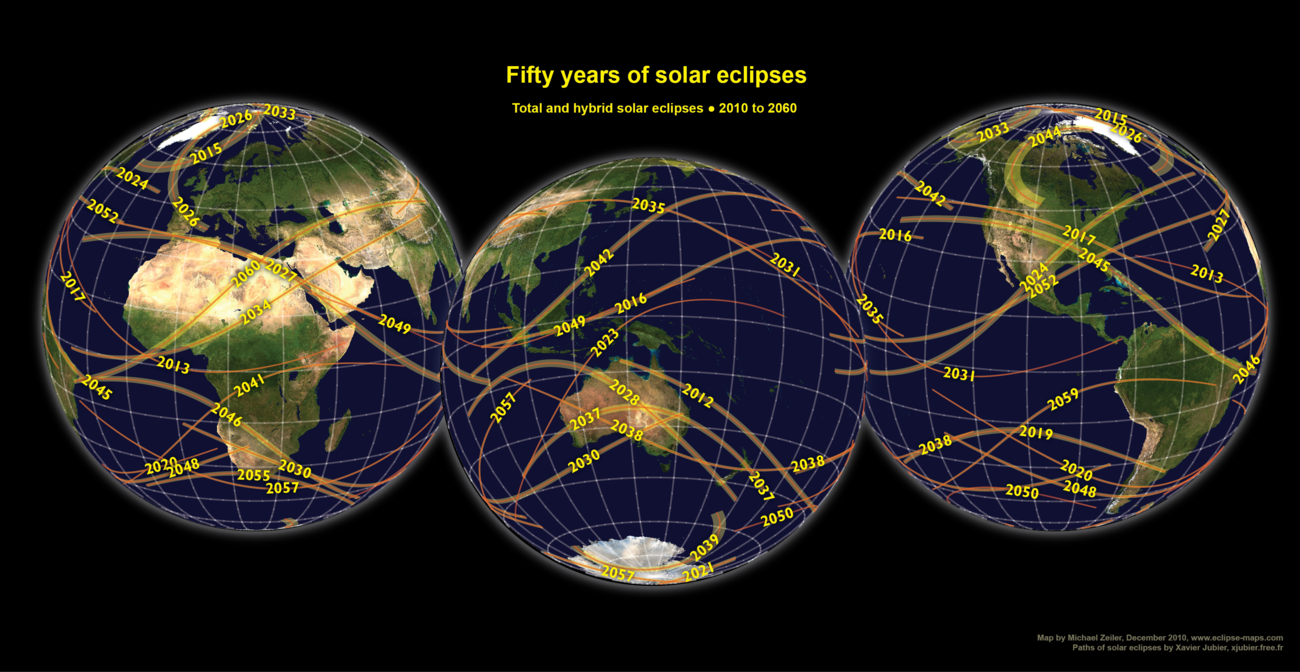I really wish this website wasn't so entertaining. It seems everyone is making this harder than it is.
First off, this:
It is of interest that on the globe the paths of the Solar Eclipse look rather odd:

is nonsense. If, Tom, you’re going to argue, “Gee, RE is silly.” you should use a reference that actually represents RE. The map is a flat projection and has zero accurate representation of the reality that is the spheroid earth.
The mechanics of every eclipse are exactly the same. The moon, at 238,000 miles away, crosses in front of the sun in a path across the entire diameter of the earth casting its shadow in various locations due to, well, geometry. That’s it. An eclipse path is that of the shadow cast, not the path of the actual moon. As such, the path can travel differently in the same way a 50ft. tree can cast a 75 ft. shadow.
Everyone here has been analyzing the situation using 2D maps with the north pole directly at the top. That’s not reality. Reality is a 3D object with the north pole tilting toward or away from the direct path of the sun.
The TimandDate website presents a rotatable 3D model of every eclipse. Play with it a little and put the north pole in a realistic position and you get this:

Every eclipse path is a nearly (not exactly due to the tilted, rotating spheroid shape of the actual earth) straight line all running a horizontal path if the north pole is positioned such that it aligns properly with the inclined orbit of the moon. It’s almost as if, and bear with me ‘cause this is crazy talk, the shadows are all being caused by an object moving at a consistent angle to N-S in a straight line between a spheroid and a distant light source.








